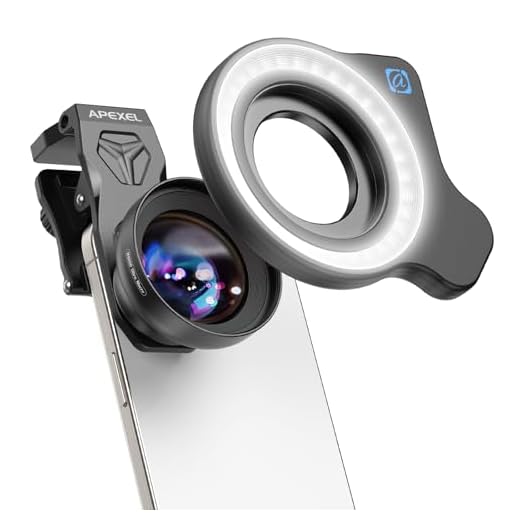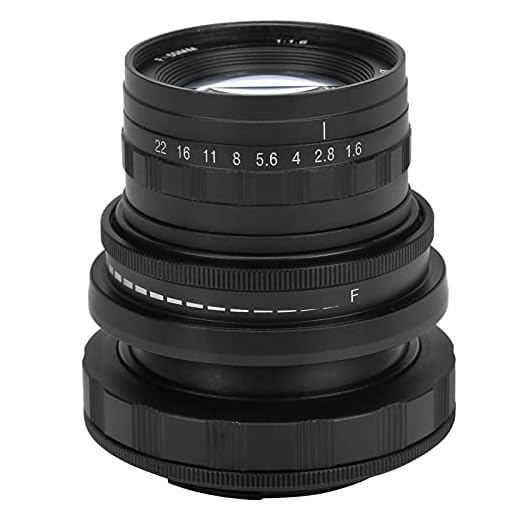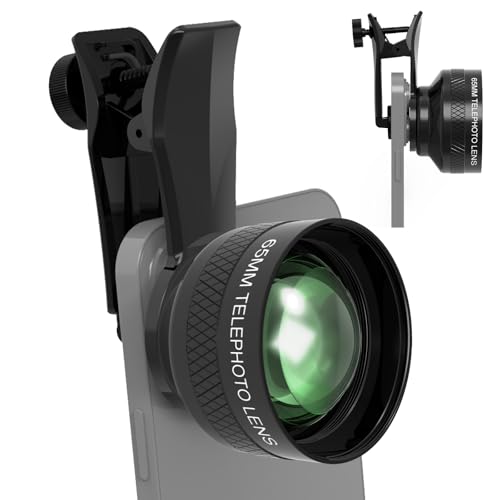



Choosing the right optical attachment can greatly enhance your photographic capabilities, whether you’re a novice or a seasoned enthusiast. This article outlines key factors to consider and offers insights into various types of optical attachments available on the market. You’ll find detailed information on focal lengths, aperture sizes, and compatibility with different camera bodies.
This overview is particularly beneficial for those looking to upgrade their photographic gear or for anyone eager to understand the impact of different optics on image quality. The information shared here will aid you in making informed decisions that align with your creative vision.
In the following sections, I discuss the characteristics and uses of prime and zoom optics, as well as specialty options like macro and fisheye attachments. By the end, you’ll have a solid grasp of what to look for, how to match optics to your shooting style, and tips for maximizing your investment.
Best Guide to Camera Lenses
Understanding the differences in optics can greatly enhance your photography. Specific focal lengths serve different purposes, such as wide-angle for capturing landscapes and telephoto for isolating subjects without disturbing them.
Choosing the right aperture is also critical. A wider aperture, like f/1.8 or f/2.8, allows for excellent low-light performance and creates a pleasing depth of field, isolating your subject from the background. Conversely, a smaller aperture, such as f/8 or f/11, increases the depth of field, ideal for group shots or landscapes.
Types of Optical Equipment
Zoom Optics: These versatile options allow for a range of focal lengths in one unit, making them convenient for various scenarios. However, they may compromise on image quality compared to fixed focal lengths.
Prime Optics: With only one focal length, these can produce sharper images and often have wider maximum apertures. They challenge you to move around and think creatively, offering a unique perspective.
- Wide-angle: Typically ranging from 14mm to 35mm, perfect for expansive scenes.
- Standard: Around 50mm, mimics the human eye’s perspective, suitable for portraits and street photography.
- Telephoto: 70mm and above allows for distant subjects to be captured with clarity, ideal for wildlife or sports.
Also, consider the filter options when selecting your glass. UV filters protect the lens, while polarizers reduce reflections. Neutral density filters allow for long exposures even in bright conditions, enhancing your creative control.
| Type | Aperture Range | Ideal Use Cases |
|---|---|---|
| Wide-angle | f/2.8 – f/4 | Landscape, Architecture |
| Standard | f/1.8 – f/2.8 | Portraits, Street |
| Telephoto | f/2.8 – f/4 | Wildlife, Sports |
Bearing all this in mind, I recommend testing different optics to understand their unique characteristics. Handling them firsthand will aid in making the right investment tailored to your photographic style.
Understanding Focal Length and Its Impact on Photography
Focal length significantly influences composition and perspective in imagery. Choosing the correct focal length can enhance storytelling by emphasizing certain elements while minimizing others.
A lens with a shorter focal length, such as 18mm to 35mm, captures a wider view. This is ideal for dynamic scenes, allowing me to include more context and environment. It’s particularly useful in cramped settings where space is limited. On the other hand, a focal length of 50mm to 85mm draws attention to subjects, making it perfect for portraits as it provides a more natural perspective.
Impact on Composition
Focal length determines how I frame a subject. With a wide-angle lens, I can exaggerate perspectives, making foreground elements appear larger than those in the background. This creates depth and can lead to visually engaging images. However, I must be cautious of distortions that may alter the appearance of my subjects.
Conversely, a longer focal length, such as 200mm or more, allows for tighter compositions, excellent for isolating subjects from distracting backgrounds. This compression effect enhances detail and can add a level of intimacy to portraits.
Field of View and Depth of Field
The field of view changes with focal length adjustments. Shorter focal lengths capture wider vistas, while longer ones narrow the perspective. Understanding this allows me to craft the desired visual impact. For instance, lens choice can determine if I want a sweeping skyline or a focused shot of a single subject.
Additionally, focal length affects depth of field. Longer lenses can produce a shallower depth, allowing for beautifully blurred backgrounds that emphasize the main subject. This technique can be powerful in highlighting details and emotions in portraits or macro photography.
Conclusion
In summary, grasping the concept of focal length and its implications is fundamental in shaping my images effectively. Each length offers unique properties that contribute to my visual narrative and artistic expression.
Comparing Prime and Zoom Lenses for Different Scenarios
Choosing between fixed focal length and variable focal length optics often depends on specific use cases. For me, prime optics excel in low-light conditions and produce sharper images due to their simpler design, often featuring larger apertures. In scenarios like portrait photography, I find that the shallow depth of field provided by these optics creates a pleasing bokeh effect, isolating the subject beautifully.
On the other hand, zoom optics offer incredible versatility. When shooting events such as weddings or sports, I appreciate the ability to quickly adjust the focal length without needing to switch equipment. This adaptability allows me to capture a range of compositions without missing critical moments. The convenience of a zoom lens often outweighs the minor compromises in image quality, especially when working under dynamic conditions.
Suitability for Various Scenarios
- Portraits: Prime lenses shine with their wider maximum apertures, offering stunning bokeh and subject isolation.
- Landscapes: While both options can perform well, prime lenses provide superior sharpness, while zooms allow for flexibility in framing.
- Events: Zoom lenses are my go-to because of their range, allowing me to adapt to fast-changing situations without interruption.
- Street photography: A compact prime can be advantageous for discreet shooting, but a zoom can help capture distant subjects with ease.
In the end, both types of optics have their strengths, and my choice often comes down to the specific circumstances of a shoot. By evaluating the unique demands of each situation, I can determine which tool will help me achieve the best results.
Essential Factors to Consider When Choosing Lens Aperture
When selecting an aperture for your optical device, light transmission is paramount. A wider opening allows more light to reach the sensor, making it easier to capture images in low-light settings. This feature is particularly beneficial for indoor photography or during dusk and dawn, where natural light is limited.
Depth of field also plays a significant role in my decision-making process. A larger aperture creates a more shallow depth, resulting in a beautifully blurred background that helps the subject stand out. Conversely, a smaller opening can achieve greater sharpness throughout the image. Depending on the creative effect I intend to achieve, this factor can significantly influence my choice.
Additional Aspects to Weigh
- Sharpness: Different apertures can affect the sharpness of an image. Often, lenses perform best at mid-range apertures.
- Vignetting: Wider apertures might cause darkening at the corners of an image, known as vignetting. It’s a consideration for compositions with evenly distributed light.
- Lens performance: Understanding how specific optics behave at varying apertures can help achieve the desired results.
In summary, the choice of aperture significantly impacts light intake, depth of field, sharpness, and overall image quality. Tailoring these elements to my photographic goals balances creativity with technical precision.
Exploring Specialty Lenses: Macro, Fish-eye, and Tilt-Shift
When approaching specialized optics, I find macro lenses indispensable for capturing intricate details in subjects such as flowers and insects. The ability to focus at very short distances allows for astonishing clarity that reveals textures and features often overlooked. I recommend looking for options with a minimum focusing distance of around 30 cm for optimal results.
The fish-eye lens offers a unique perspective with its ultra-wide field of view. It can create stunning visuals with a noticeable curvature. For striking effects, I enjoy experimenting with the distortion this type of lens introduces, especially in architectural and landscape photography. Ideal focal lengths typically range from 8mm to 16mm, assisting in achieving that distinct look.
Understanding Tilt-Shift Options
Tilt-shift lenses provide significant control over perspective and depth of field. This is particularly useful in architectural photography where correcting converging lines is necessary. I often utilize the tilt function to achieve a selective focus effect, emphasizing specific areas while artistically blurring the surroundings. Investing in one of these optics can elevate the quality of your images remarkably.
Here’s a quick overview of factors to consider when utilizing these specialized optics:
- Macro: Look for close focus capabilities and sufficient magnification ratios.
- Fish-eye: Choose between circular and full-frame options to match your creative vision.
- Tilt-Shift: Explore the range of tilt and shift capabilities for architectural or product shots.
Exploring these unique optics expands my artistic possibilities, enabling me to capture stunning visual narratives that go beyond standard imagery.
Lens Compatibility: How to Match Lenses with Your Camera Body
To ensure a smooth experience with your equipment, verifying the mount type is the first step. Each manufacturer utilizes specific mounts, meaning that a lens designed for one type may not fit another. Always check the compatibility of the mount with your body model before making a purchase.
Another factor to consider is the sensor size. Lenses are categorized into full-frame and crop sensor types. Using a lens designed for a full-frame system on a crop sensor body will result in a crop factor, altering the field of view. Understanding these fundamental aspects before selecting any optical unit saves time and money.
Additional Aspects of Compatibility
- Autofocus and Stabilization: Some lenses employ advanced autofocus and stabilization technologies that may only work with certain camera models.
- Image Quality: The optical design can impact performance, especially when used outside its intended purpose.
- Manual Control: Many lenses have manual focus rings that provide fine-tuning, but compatibility with autofocus systems may differ across models.
Researching your specific equipment and its capabilities will support better choices. Compatibility issues can diminish the overall experience, so it pays off to spend time investigating your options before making a decision.
Maintenance Tips to Extend the Life of Your Camera Lenses
Regularly inspecting and cleaning the optical parts is fundamental in ensuring longevity. I make it a habit to use a microfiber cloth for wiping the glass surfaces gently. This prevents scratches and keeps the lenses clear from dust and smudges.
Always store the glass components in a protective case when not in use. Moisture and dust can accumulate, causing internal damage over time. I recommend using a dehumidifying pouch in your storage area to mitigate humidity-related issues.
Additional Care Practices
Check the following practices to maintain the integrity of your equipment:
- Use lens caps: Always attach lens caps when not shooting. This simple step reduces the chances of accidental scratches.
- Avoid direct sunlight: Keeping lenses exposed to bright light can lead to unwanted reflections and heat damage.
- Regular inspections: I routinely check for dust accumulation in the interior and exterior. If I notice any, I carefully remove it using a blower.
Consider creating a cleaning schedule tailored to your usage frequency. For example, after a rigorous shoot in dusty conditions, I prioritize a thorough cleaning immediately after returning home.
Additionally, I advise against using household cleaners that may contain harmful substances. Instead, opt for solutions specifically designed for optics to ensure safety.
By following these simple practices, I have significantly extended the life of my gear, ensuring it remains in optimal working condition for years to come.
Budgeting for Quality: Finding Affordable Yet High-Performance Lenses
Look for prime optics within a reasonable range, as they often deliver superior quality without the hefty price tag. Brands like Sigma, Tamron, and Yongnuo produce high-performance optics that won’t break the bank.
Research and read user reviews for specific models; this can provide insight into real-world performance and durability. Joining photography forums or social media groups can also yield valuable, firsthand recommendations.
- Prioritize your needs: Determine whether you need a wide-angle, standard, or telephoto model based on your shooting style.
- Explore second-hand options: Used equipment can offer significant savings while still maintaining acceptable quality standards.
- Consider local marketplaces: Websites like Craigslist or Facebook Marketplace can yield great deals from users looking to sell.
- Take advantage of sales: Keep an eye on seasonal discounts, especially during Black Friday or holiday promotions.
- Opt for compatibility: Choosing a lens that works well with your current setup can save you money in accessories and adapters.
Investing time in research and networking can yield exceptional results without a significant financial commitment. Always remember that some of the most rewarding optics do not come at exorbitant prices.
Best guide to camera lenses
Features
| Part Number | 2973C002 |
| Model | 2973C002 |
| Warranty | 1 Year Manufacturer Limited Warranty |
| Color | Black |
| Release Date | 2018-11-15T00:00:01Z |
| Size | 35mm |
Features
| Part Number | 6473A003 |
| Model | 6473A003AA |
| Warranty | 90 days limited warranty |
| Color | Black |
| Language | English |
Features
| Part Number | 0570C002 |
| Model | 0570C005AA |
| Warranty | 1 year coverage for parts |
| Color | Black |
| Is Adult Product | |
| Release Date | 2015-05-21T00:00:01Z |
| Size | Lens Only |
| Language | English |
| Publication Date | 2019-06-17T00:00:01Z |
Features
| Part Number | JT-420cn |
| Model | 420-800mm super telephoto lens |
| Warranty | 1 year warranty |
| Color | black |
Features
| Part Number | APL-FL26 |
| Model | HB100UFL26 |
| Warranty | 1 Year Manufacturer |
| Color | Black |
| Size | HB100UFL26 |
Features
| Part Number | 214hzsf02b1tc844 |
Features
| Part Number | DC226 |
| Model | DC226 |
| Color | Black |
| Size | compact |
Features
| Part Number | CSPRO |
| Model | CSPRO |
| Warranty | 90 Day |
FAQ:
What are the different types of camera lenses available for photographers?
Photographers have access to a variety of lens types, each suited for different styles and needs. The main categories include prime lenses, which have a fixed focal length; zoom lenses, which offer a range of focal lengths; macro lenses, designed for close-up photography; and wide-angle lenses, ideal for capturing expansive scenes. Additionally, there are specialty lenses such as fisheye and tilt-shift lenses that cater to specific creative requirements. Each type offers unique characteristics that influence perspective, depth of field, and image quality, making it vital for photographers to choose based on their shooting goals.
How do I choose the right lens for my camera?
Choosing the right lens for your camera depends on several factors, including your photography style, budget, and camera compatibility. First, identify what you primarily shoot – portraits, landscapes, sports, or macro photography. For portraits, a prime lens with a wide aperture can create beautiful bokeh. For landscapes, consider a wide-angle zoom lens. Always check lens compatibility with your camera’s mount type, as manufacturers often create exclusive lines for their systems. Finally, evaluate your budget; many high-quality lenses are available without breaking the bank, so explore your options carefully.
What is the significance of lens aperture in photography?
The lens aperture plays a critical role in determining exposure and depth of field in photography. A wider aperture (smaller f-number) allows more light to enter the lens, which is beneficial in low-light conditions and can create a blurred background effect, perfect for portrait photography. Conversely, a smaller aperture (larger f-number) lets in less light, which is useful for achieving sharp images across a larger depth of field, ideal for landscapes. Understanding how to manipulate aperture settings allows photographers to control both the brightness of their images and the focus on different elements within a scene.
Can I use lenses from different brands on my camera?
Using lenses from different brands on your camera can be possible, but it generally requires an adapter. Many photographers choose to use third-party lenses that are compatible with their camera model, but not all lenses will perform equally well. Adapters can sometimes affect autofocus functionality or image quality, so it’s essential to research compatibility before making a purchase. If you’re considering adapting lenses from a different manufacturer, ensure that the adapter is well-reviewed and check what features may be limited when using it with your specific camera.











